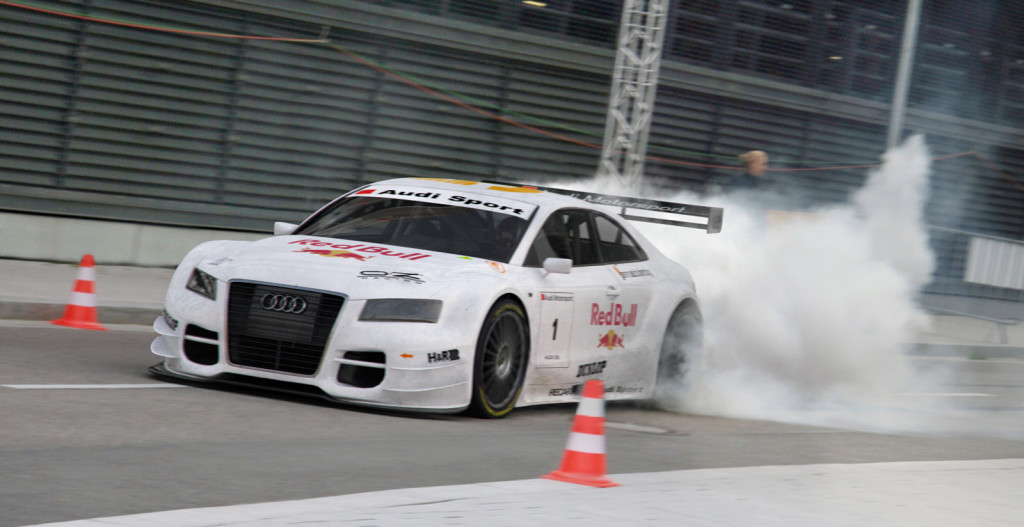
We all like to talk shop with our buddies and compare figures. Suspension settings, engine power and gear ratios are popular but we often neglect the thing which connects our car to the road: the tire and its contact patch. In order to drive well, the tires, their construction, characteristics and ideal treatment need to be deeply understood.
I’ve found that the best drivers are those who manage their tires the best. Once you get into racing, you realize that setting a blistering lap time is something to appreciate but just as impressive, though less spectacular, is the ability to get your tires up to temperature quickly and make them last. Once you’ve got a decent set of performance tires fitted to your rims, get your car to the track and take note of these suggestions. They’ll help you put down some solid lap times and appreciate the science behind racing.
First off, the tires need to be brought up to temperature fully to get the most from them. Watch any televised race and during the formation laps, take note of the drivers weaving left and right to generate heat in the contact patch. Please note that this is not necessary with standard road tires which have tread blocks, since the natural movement of the blocks will generate enough heat.
To get the entire carcass heated up, lateral movement must combined with longitudinal movement. While the sideways shimmying helps, you’ll need to combine this movement with braking and accelerating to stretch the tire carcass and make it flex, ensuring that the sidewall and the contact patch are of a similar temperature. Braking while turning, or stabbing the throttle while turning to generate a bit of wheelspin will do the trick. In addition, a long push of the brake pedal, also known as “dragging the brakes” has the effect of warming the rotors, which in turn warm the rims and the tires.
Once you’ve brought your tires up to operating temperature, maintaining their performance over the course of a race is another challenge indeed. In order to preserve your tires, the key is not to overheat them, flatspot them or wear their surface off entirely. In order to do this, staying smooth is an overarching principle that needs to be heeded at all times. Not only should your steering inputs be smooth, progressive and graceful, but your throttle application needs to be the same – slowly adding throttle until you’re flat to the floor. Braking requires a firm initial push, of course, but even still there is a deliberate smoothness employed when the pedal is depressed and released. Keep in mind that this is all relative since you want to get through the corner as quickly as possible so being excessively smooth might not make you any faster, but in order to prevent excessive sliding of the car every input needs to be made very deliberately. Practice making a conscious effort every time you manipulate one of the inputs, so that when it comes time to race, your techniques will be programmed and you can focus on beating the next guy.
Techniques aside, in order to have a prevent wheelspin, sliding or locking tires, you need a calm mindset, since tension reduces sensitivity and too much aggression, or “overdriving” leads to making mistakes and slower laptimes. When put under pressure by an opponent, stay focused on what you’re doing instead of worrying about their moves. Similarly, if your laptimes are worsening, take a deep breath and remain calm so that you aren’t tempted into overdriving. Seeing a pursued driver pressured into making a mistake is pure joy to the attacker, who realizes that they are beginning to have an effect. If the pursuing driver notices their “prey” locking up or going sideways corner after corner, they know their time to pounce is near.
Understanding your tires goes beyond figuring out which compounds work best in which situations: it requires an understanding of the lifepsan and the temperature ranges the tire works best within. Most importantly, getting your tires to work for you requires a sympathetic touch – they should be treated with care but used effectively; inputs should be measured but assertive, not aggressive. If you’re too easy on them they won’t heat up properly, but if you’re too pushy you’ll burn them off prematurely. Burn off all your rubber and you become a sitting duck, unable to do anything but watch as the more patient drivers blow by. Learn to manage your tires and you’ll dictate the pace of the race, enjoy more of the track day and save money.





Leave a Reply